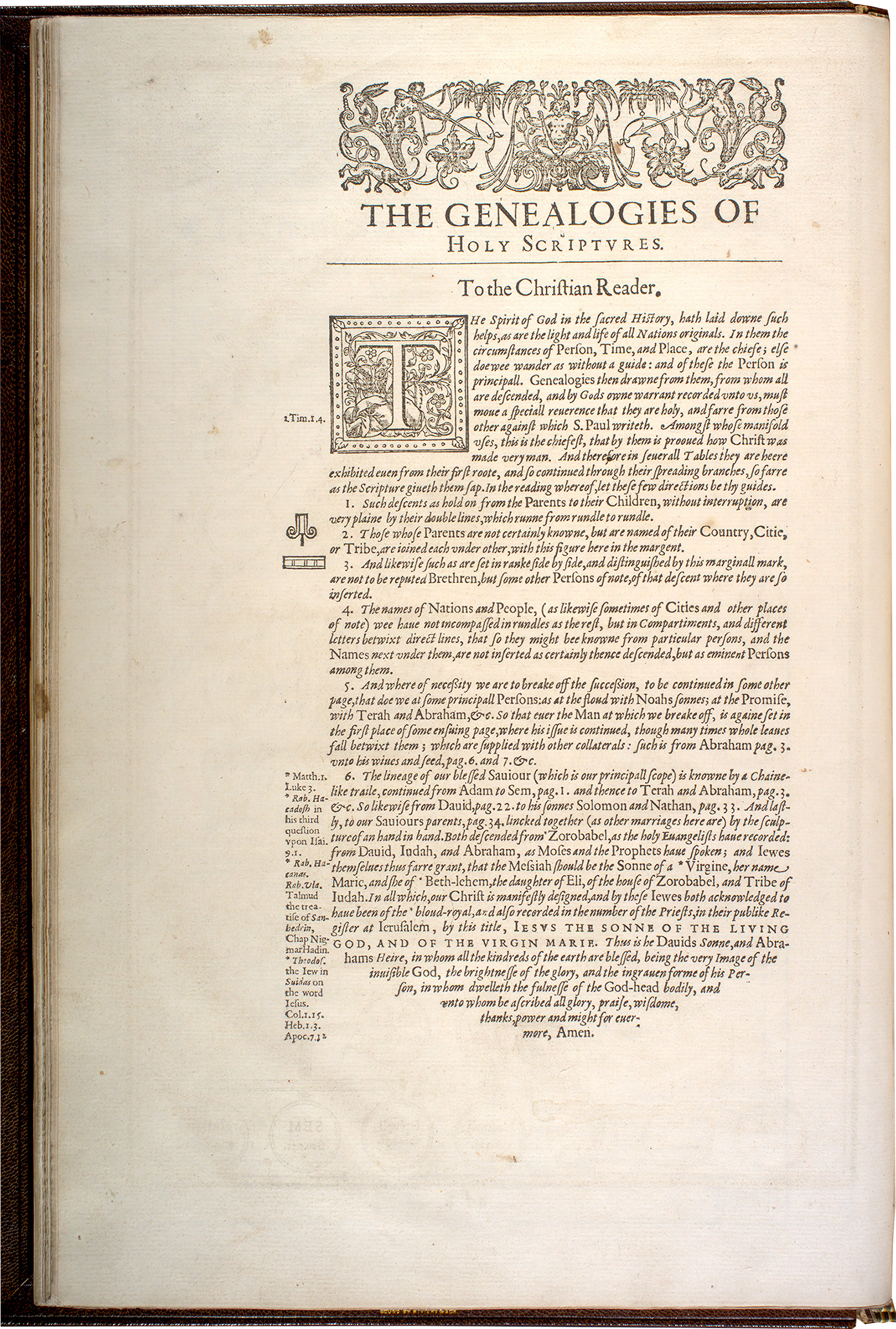According to John Lightfoot's preface to the collected works of the sixteenth-century English Christian Hebraist, Hugh Broughton, "Mr. John Speed, a man well known, was Overseer of the Press for [the printing of Broughton's A Concent of Scripture]: a Taylor by trade; but, by acquaintance with Mr. Broughton, grown very Studious in the Scriptures, and by his directions grown very Skilfull in them. In the time, while the Concent was Printing, he, by Mr. Broughton's direction, gathered all the Genealogies of the Bible into one View, and at the last they were Published under his name, in the form we have them before our Bibles. But it was Mr. Broughton, that directed, and digested them, and there are yet fair Manuscripts of them to be shewed, some whereof have the names in Hebrew, and Greek, and some in the Latine Letter, and in some of them Mr. Broughton's own handbo?=&.And yet when the Genealogie came to be Published, because the Bishops would not endure to have Mr. Broughton's name prefixed, Mr. Speed went away with all the credit, and profit: so, that he would confess, and it was no more then he had good reason to do it; That Mr. Broughton was a means under God of great Blessings to him, and his Children, for worldly comforts."
It's difficult to confirm all the details in Lightfoot's account, especially his assertion of existence of manuscripts by Broughton with earlier versions of the genealogies. What we do know is that in 1610, John Speed, who had achieved his early success as a cartographer, was granted a ten-year license to insert his 34-page engraving of The genealogies of the scriptures, according to every familie and tribe in the soon-to-be-published King James version of the Bible. The genealogies of the scriptures was part of a package of readers' aids sold separately and designed to be bound at the beginning of the text. Speed's "tables" do appear to be based on those created by Broughton, which he adapted and expanded. Spee's version of the harmonizing of the conflicting genealogies in the gospels of Mathew and Luke follow exactly Brought's own extensive explication of the differences. The same can be said for the way Speed's charts address other discrepancies between the succession of Judean and Israelite monarchs in Kings and Chronicles.
For Broughton, the stakes for getting these chronologies right could not have been higher: "this table by ignorance of Scripture grounde hath hardened Turkes: whose sworde the worde would haue turned to our good: hath hardened Iewes, to despise the ioyance of the Gospel: hath weakened Papistes to thinke the Gospell and Scripture vnexplicable: that weakened euen our selues to burst out into haynous notes, and barbarous rage against the openers of trueth." Moslems, Jews, and Catholics are looking to English Protestants to get their history right, Broughton seems to be suggesting, and as long as they don't, the English Church cannot expect the universal acknowledgement of Christian truth for which it should be striving. The impact of Broughton's extensive efforts in biblical chronology is long-lived, too. Not only do his calculations and genealogies come to shape the tables and charts that preceded the printed versions of the King James Bible through many of its early printings, they also served as the key basis for the work of James Ussher, Archbishop of Armaugh, whose Annals of the Old Testament, first published in 1650, is widely acknowledged as the source for Young Earth Creationism, the influence of which continues to be felt to this day.
